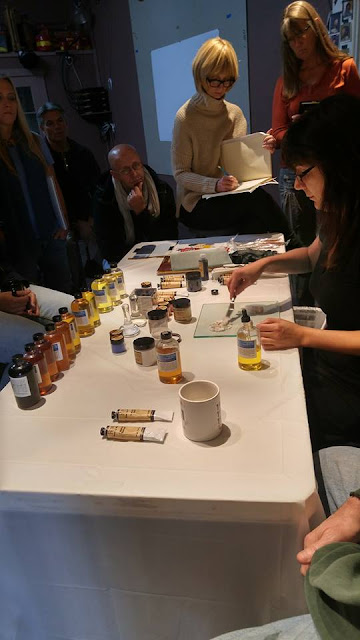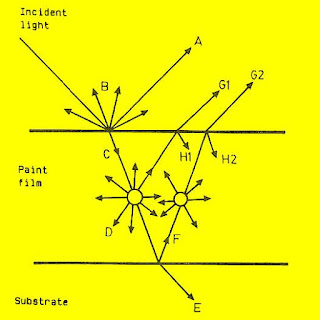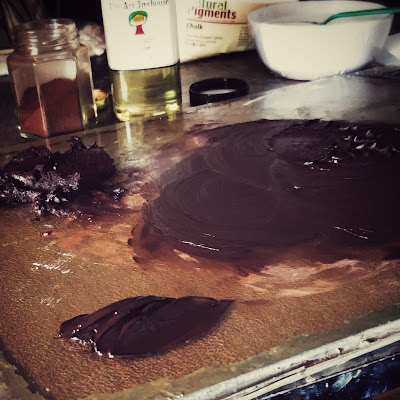I recently had the opportunity to attend Natural Pigment's "Painting Best Practices" workshop held at Anthony Ryder's studio in Santa Fe, NM. It was an experience I won't soon forget! I am still contemplating all the wonderful information that was shared in the three day class. Everything concerning artist's materials was explained and broken down to it's smallest parts, and by that I mean down to the molecular level. It was fascinating to learn how every part of the art making process has a direct affect on all the other parts. From framing, supports, grounds, oil paint, mediums, varnishes, solvents, etc; every individual part's pros and cons were discussed based on the scientific research being done by George O'Hanlon and art conservationists in major museums. George (founder and president of Natural Pigments) shared his vast experience and research in hopes to lead our blind ways into the light of KNOWLEDGE. Many artists today are working in the dark when it comes to understanding their materials.
I have been on a journey recently in my own art practice, making my own oil paint, mediums, and even creating handmade linseed oil in the tradition of the old masters. What I've learned in the process has been fascinating. Today many artist materials are mass produced with little or no information for professional artists. In the 20th century we've seen the decline of many modern works of art, George O'Hanlon and art conservationists are madly working to educate artists on materials in hopes that future artworks may last through many generations without falling apart.
One of my favorite parts of the workshop was learning about how physical light plays a role in an artwork and the optics of paint films. Light rays are either reflected, or upon entering the paint film are refracted, bent and scattered, then reflected or absorbed through the substrate--or a combination of all three. This has an impact on how we view the paint itself, it's relative transparency and how glossy/matte the finish is. The refractive index of a paint pigment plays a role in how opaque or transparent it is. Low refractive pigments, such as Ultramarine blue and lead white, are more transparent. Titanium white has a high refractive index, light entering the titanium paint film bounces around more, is scattered, and the result is a paint that looks opaque. Pigment particle size plays a large role in the paint film and how light plays upon the surface as well.
Transparent and
translucent passages in painting are what give the old masters works
such a variety of textures and created a beautiful quality of paint. It also made it
possible for them to optically extend the range of values in their painting. A transparent shadow is much, much darker than the same color painted opaquely.
They were aware of the optics of paint films and were able to push the
boundaries and limits of the value scale dramatically by
incorporating low refractive paints in their oil paintings as well as bulking up their opaque passages.
Another way of creating transparent and translucent passages in a painting is by adding extenders that have a low refractive index, such as chalk or barite. Also, choosing pigments with a larger particle size will increase transparency, as the physical light has less to bounce off of in the paint film. The extremely fine particle size in modern tubed oil paints creates a more opaque quality and they are also extremely concentrated. This is the opposite of the paint used before modern manufacturing made tubed paints possible. Some paints of the past contained larger particles and were also mixed with extenders like calcite and different oils for different effects. The painters of the past were much more knowledgeable about materials and were able to bend them to achieve amazing effects and also last hundreds of years.
Here is a great article about impasto technique of Rembrandt and his choice of paint, oils and extenders: Rembrandt
Listen to an interview with George O'Hanlon and learn his ten best painting practice tips HERE










